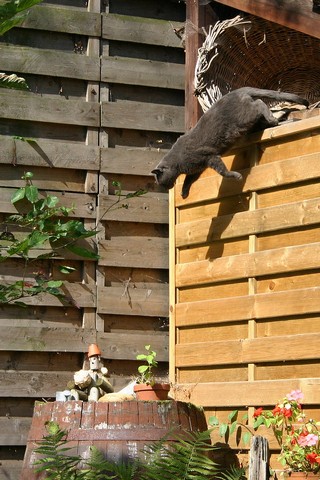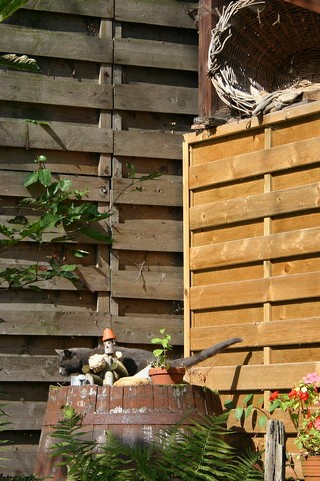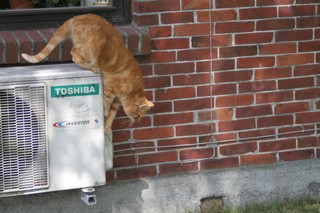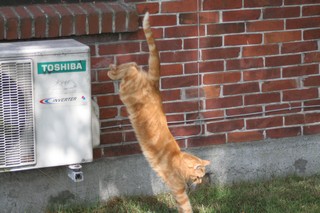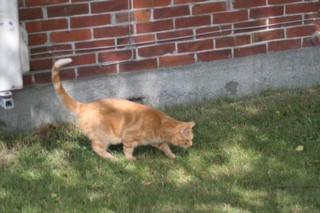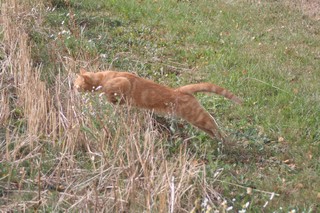Jump
Cats can jump upwards onto either a vertical surface (for example a tree trunk) or a horizontal surface (for example a counter top). They can also jump downwards off a vertical or horizontal surface and they can jump into a container. When jumping, propulsion is generated by the hindquarters so before the jump the body weight will be shifted caudally so that the centre of gravity orientates over the hind legs and the legs are flexed to generate the energy necessary to propel the body forwards. The spine will usually be seen to be flexed at this point. The forelimbs will then be lifted from the surface and the spine extended as the body moves forwards. The hind paws will then also leave the surface. The forepaws will make contact with the goal surface, one fractionally ahead of the other and the spine will then flex to draw the hind limbs towards the forelimbs so that the hind paws can also make contact with the surface. When jumping, the neck is generally extended in the direction of travel and the tail is extended behind the cat to assist with balance. The first two sequences show cats jumping from a height to the ground or a lower object.
Cats also jump into things, such as vegetation.
Cats in the following videos demonstrate jumping up against, onto and off objects. |
|||||||||||||||||||

Compiled by:
Dr Sarah Ellis, Helen Zulch and Jenna Kiddie
